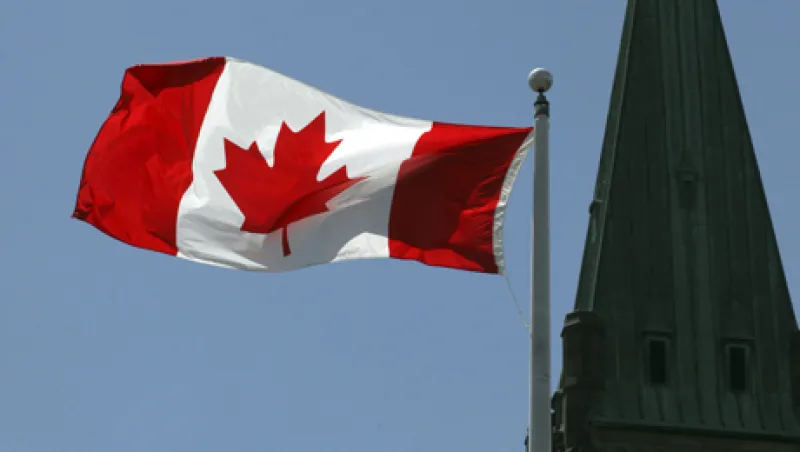ProShares of Bethesda, Maryland, has launched the first ETF in the U.S. with dollar-denominated covered bonds from non-U.S. banks — its new USD Covered Bond ETF, which started trading on May 23 under the ticker symbol COBO.
So far, with $13 million in assets, most of the 36 covered bonds in its portfolio are from Canadian banks, with a weighted average maturity of 3.33 years and an average yield to maturity of 1.48 percent.
Canada is still a AAA country, and that’s significant to the ability of its banks to float AAA covered bonds. Because covered bonds are collateralized — backed by dedicated pools of loans that remain on the banks’ balance sheets — and they’re also collateralized at slightly more than 100 percent, as a cushion against defaults, the bonds are typically rated AAA, even when the issuing banks are a notch or two lower. But there’s one big caveat: The sovereign rating of the issuing bank’s country also has to be AAA.
By concentrating on the Canadian banks, with a handful of other issues from banks in the AAA countries of Australia, Sweden and the U.K., the ETF’s portfolio is all AAA, notes Michael Sapir, ProShares chairman and CEO.
The concept of the covered bond was born in Prussia in 1770. Starting at that point, the European system of loan finance developed differently, with the banks holding on to their loans while issuing covered bonds — a system also known as on-balance-sheet securitization. In the U.S., because of the guarantees from Fannie Mae and Freddie Mac, the norm became off-balance-sheet securitization, with the banks selling their loans into a ready secondary market.
Even before the financial crisis of 2008, there were efforts to reinvent the U.S. market for securitizations using the covered bond model, which is considered more conservative because the banks keep the loans on their books and therefore have “skin in the game.” Those efforts took on a new urgency with the crisis, but so far, the securities industry hasn’t been able to get the Congressional legislation that would enable the U.S. banks to issue covered bonds. The obstacle has been the FDIC, which has its concerns about assets being “air-lifted” out to investors in the wake of a bank bankruptcy — all the more so since the pools include those additional assets that the FDIC might want to access to pay off depositors.
There has been a lot of negotiation between the FDIC and the securities industry, but the latest bill in Congress, introduced in both the House and the Senate last year, has not gone anywhere, and it’s not likely to go anywhere for the balance of this year, says a securities industry source, who asked not to be named. That is because, with the election on the horizon, Congress is now in lame-duck mode, he says.
Meanwhile, in 2010, a covered bond market started to develop in the U.S., with investment bankers bringing foreign-bank-covered bonds into the U.S. as Rule 144A private placements with the expectation that one day, U.S. banks would be able to issue covered bonds in their own market and that the time was right to start educating investors about covered bonds and how they work.
In 2010, Canadian and European banks issued $29.65 billion in dollar-denominated covered bonds in the U.S., and in 2011 and 2012 through June, another $66.04 billion was issued, according to Dealogic. With a now sizeable market, last summer, BNP Paribas launched the first index to track the dollar-denominated covered bond market, the BNP Paribas Diversified USD Covered Bond index. (ProShares’ ETF will attempt to track its performance, according to its documents.)
Meanwhile, the Royal Bank of Canada may have scored a significant breakthrough in its efforts to sell dollar-denominated covered bonds in the U.S.
On May 18 the SEC issued a “no-action letter,” which allowed RBC to go forward and file a registration statement with the SEC for a $12 billion shelf offering of covered bonds, as if they were just like any other registered security. On the afternoon of July 30, the SEC
green-lighted the deal, making it the first covered bond shelf offering approved by the SEC. It’s likely that other non-U.S. banks will follow in RBC’s footsteps, making for an uptick in new issuance.






